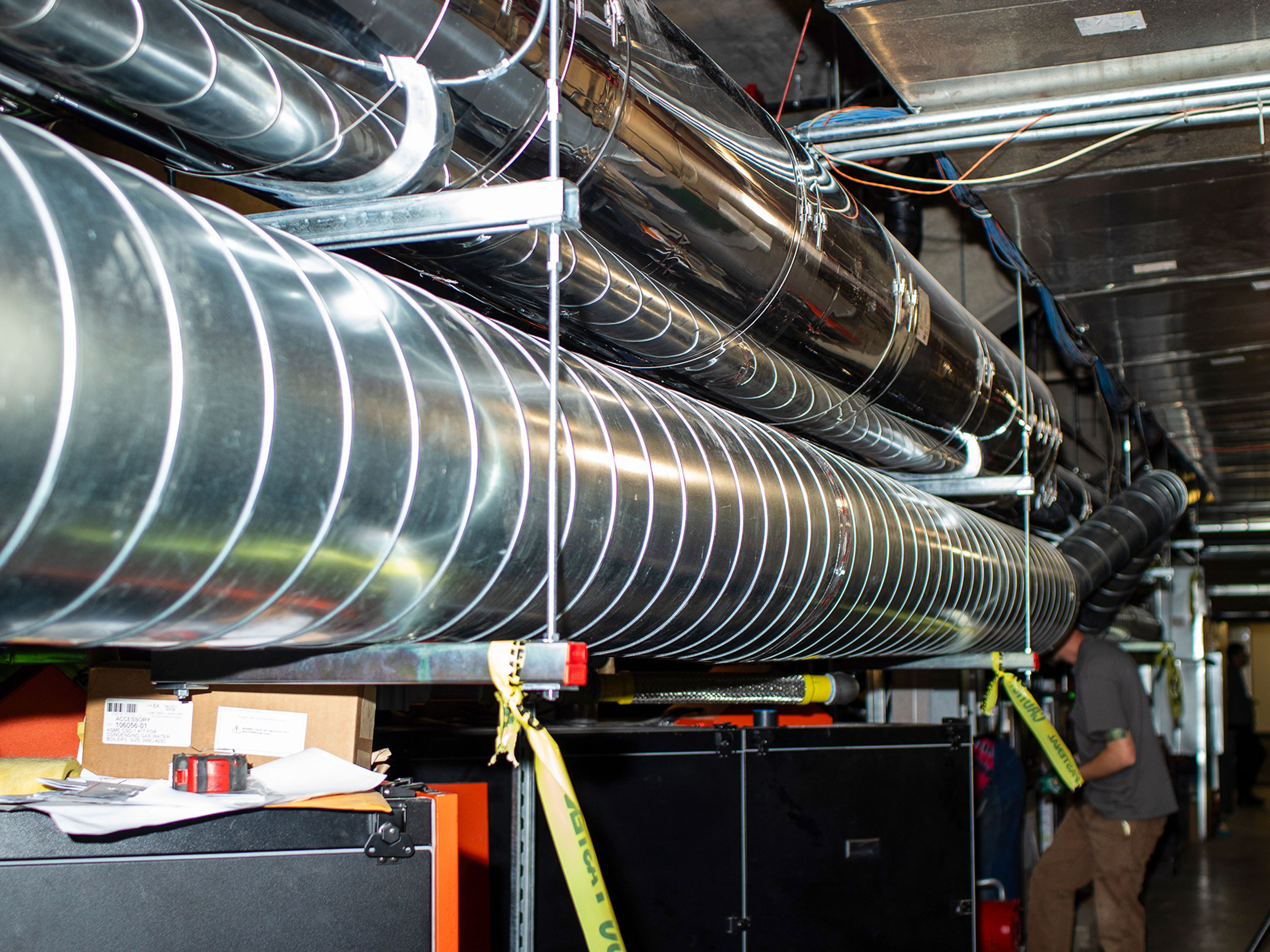
Energy Storage Systems
Energy storage systems, i.e., lithium-ion batteries. Uncontrolled usage of Earth’s resources has led the world to the precipice of catastrophic impacts of climate change. Avoiding such dire consequences necessitates a rapid shift toward clean energy. Technological advancements in energy storage systems offer a promising but sustainable path to quickly modify our energy use and extraction techniques. Not only that, they ensure grid reliability and offer fair choices to electricity consumers as well. Although building energy storage facilities has minor environmental impacts, their benefits, such as fewer emissions, outweigh the adverse impacts. This will not only benefit the environment but also provide us with a sustainable and secure energy future.
—Chinonso Anozie, Assistant Professor of Law, College of Law
Art, Redefined
Digital technology, a pivotal innovation of the twentieth century, revolutionized the art world. It introduced novel forms like digital painting, 3D modeling, and animation, expanding the horizons of artistic creation. This revolution not only equipped artists with advanced tools but also democratized art, facilitating global distribution and connectivity. The fusion of traditional and digital techniques broadened creative expression, redefining art itself. Its impact extends to film, advertising, and video games, highlighting its role in shaping modern culture.
—Shawna Lipton, Associate Dean of Graduate Education, Associate Professor, and Chair of Critical Studies, Pacific Northwest College of Art
The Democratic Camera
Although the camera was invented in 1816 as the heliograph, it was not until 1900 and the advent of the Kodak Brownie that ordinary folk had the freedom to photograph. For politics, the initial promise of the camera was wide access to an objective visual record. Of course, instead, it involved subjective control over frame and focus. Historically, the camera has had distinctive impacts, both malign and benign, on democratic inclusion. In the early 1900s, photography effectively popularized eugenics in Germany and the United States. Conversely, W.E.B. Du Bois and, later, Peter Magubane in South Africa used photos to capture humanity across color lines.
—Sammy Basu, Professor of History, Humanities, and Public Health, College of Arts & Sciences
The Internet
The impact of the internet’s enabling and accelerating the flow of information has been mind-boggling in its scope. And it’s hard to imagine the internet becoming less consequential anytime soon. Just think of all the disruption it has facilitated already: in mail, education, shopping, media, and countless mobile applications, to name just a few examples. The internet has permeated the daily lives of nearly everyone on the planet, connecting “everything everywhere all at once”— for better or worse!
—Romana Autrey, Associate Dean for Academic Affairs, Associate Professor of Accounting, Atkinson Graduate School of Management
The Car Seat
The first car seat designed for safety was invented in 1962 by British journalist Jean Ames. A Google search taught me that she developed a three-point harness system (since expanded to a five-point harness system) for use in the back seat of cars and designed to be rear-facing. According to data from the National Safety Council, the number of motor vehicle deaths for children younger than five peaked in 1965, with 2,059 deaths that year (very early in the history of car seats, which were likely available only to those with sufficient money) and has steadily declined to 480 deaths in 2021 (the latest year for stats I found). I was born in 1961, and I remember my mom letting me ride unrestrained (no seat belt, car seat, anything) in the back of a VW hatchback. That thought scares me now!
—Meredy Goldberg Edelson, Professor of Psychology and Women’s and Gender Studies, College of Arts & Sciences
The Birth Control Pill
There’s so much to choose from! The crossword puzzle (1913)? The Slinky (1943)? The portable chainsaw (1918)? The infield fly rule (1901)? That said, I’m going to go with the birth control pill (approved in 1960). The idea of women having control over that aspect of their lives was so revolutionary that people almost immediately tried to forbid it—Griswold v. Connecticut was decided in 1965—and a lot of people around the world are still either forbidding it or trying to. From family and courtship dynamics to career trajectories, religious teaching, and public policy around the globe (think about the one-child policy in China), it’s difficult to imagine everyday life without it.
—Michael Chasar, Professor of English, College of Arts & Sciences
The Transistor
It’s got to be the transistor. It’s mind-blowing that silicon oxide (i.e. sand), which in the nineteenth century was pretty much only used for construction and to make glass, can today be transformed into tiny electrical switches about ten atoms wide. Transistors are the heart of every integrated circuit and have enabled us to do everything from putting a man on the moon to making “smart” egg cartons. Computer processors, which contain trillions of transistors, have revolutionized every field of human experience; they play and will continue to play a central role in addressing critical problems like global warming.
—Daniel Borrero, Associate Professor of Physics, College of Arts & Sciences
Reader Responses
The Teenager
Before the 20th century, teenage years were basically young adult years, where a person learned a trade or started a family. But the cultural change of the years between childhood and adulthood–where a person is reasonably intelligent, has mobility, and has money–profoundly changed culture. Almost everything “fun” is marketed to include teenagers. And since teenagers are discovering and exploring, they mix and match different cultural influences and regurgitate them in new and unexpected ways. Popular music, movies, TV shows, fashion, social media, art, memes, trends, and many other facets of culture would not be what they are without teenage influence. And the nostalgia for teenage years in older people has continued to bolster sci-fi and superhero franchises, theme parks, reunion tours, and an entire style of comfort entertainment.
Chris Freeman, Computing Technician, Willamette Integrated Technology Services
Water Treatment
The most consequential invention of the twentieth century is water treatment, because it has saved countless lives–easily tens of millions. By enhancing sanitation and hygiene, having potable drinking water has substantially reduced the transmission of diseases like cholera and typhoid fever.
JR Tarabocchia, AVP, Institutional Marketing, University Communications
The Automobile
The automobile has transformed every city in the world and created suburbs besides. Pavement has been laid down almost everywhere. Habitat for other creatures has been compromised, accelerating species extinction. Is there any human institution or invention that has had a greater impact on the physical world? Countries have marched off to war to secure fuel supplies, and oil has enriched some of the worst characters in the world. The huge contribution of auto emissions to the atmospheric change that is altering the climate in catastrophic ways almost goes without saying. Paradoxically, each automobile spends most of its time immobile, taking up space. No city in the world has figured out how to store all these motionless vehicles. The automobile absorbs urban space and creates junkyards on rural acreages. None of this addresses the firm cultural grip the automobile has on human society after a mere 100 years—another topic altogether.
Bob Coe, Salem Resident
••
Next question: What’s the best advice you’ve ever received? Send your response to magazine@willamette.edu.



